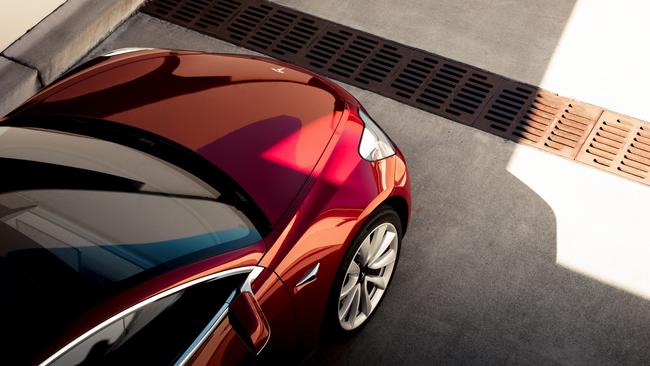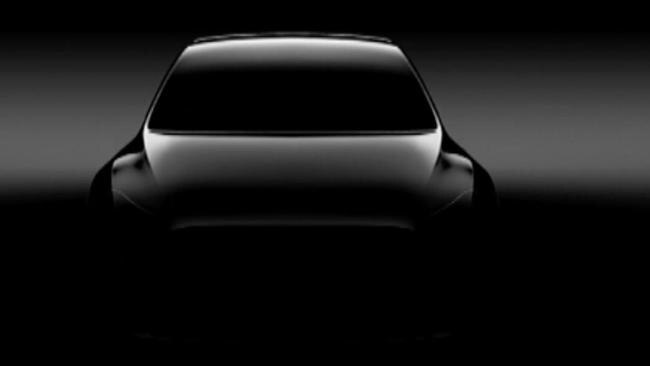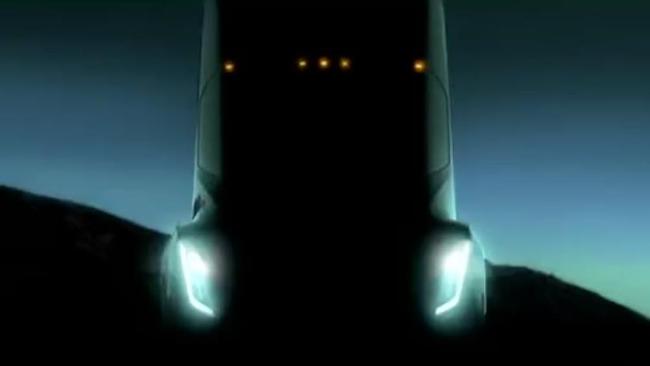Here is everything Elon Musk hopes to achieve with Tesla by 2020
FROM self-driving cars to the world’s largest lithium-ion battery to the Tesla Gigafactory, Elon Musk has a busy few years ahead.

FROM several new self-driving car models to building the world’s largest lithium-ion battery, Elon Musk has serious plans for the coming decade.
And while it might sound ambitious, the Tesla chief executive is confident he will accomplish a number of these goals by 2020.
So here is everything to expect from Tesla in the next three years:
TESLA’S BATTERY IN SOUTH AUSTRALIA
The techbillionaire has promised to solve South Australia’s energy issues by building the world’s largest lithium-ion battery in 100 days or it will be free.
Slated to be 60 per cent larger than any other large-scale battery energy storage system on Earth, the 100MW system will provide the region with 129 megawatt hours of energy.
Tesla PowerPacks will charge using renewable energy, then deliver electricity during peak hours to help maintain the reliable operation of South Australia’s electrical infrastructure.
In addition to load balancing the state’s renewable energy generation, the batteries will provide emergency back-up power in the case of a blackout.
In a blog post, Tesla said the project in South Australia “will provide enough power for more than 30,000 homes”, or reportedly a total of about one hour and 18 minutes of power going at full capacity.
While refusing to reveal the exact cost to taxpayers, South Australian Premier Jay Weatherill said the project would fall well within the $150 million set aside for renewable energy alternatives.
Musk himself had previously quoted significantly less than prices previously suggested, with his estimates putting the system at around $A33 million.
Both Tesla and Jay Weatherill have separately said they expect the project to be completed by December 1, 2017.

COMPLETE TESLA’S GIGAFACTORY
Tesla officially opened a massive $A69 billion factory in the Nevada desert that could nearly double the world’s production of lithium-ion batteries.
The Gigafactory opened a little more than two years after construction began and will be about 10 million square feet by the time it is completed by 2018.
Tesla says the factory will be producing 35 gigawatt hours of batteries in the next 12 months, which is the equivalent to the entire world’s production in 2014.
Tesla believes making its own lithium-ion batteries at the Gigafactory will reduce its battery costs by more than a third and will create 10,000 jobs in the next three to four years.

TESLA MODEL 3
By using the batteries created at the Gigafactory, Tesla will be able to produce its first mass-market car — the Model 3.
The Model 3 is billed as an electric rival to the BMW 3 Series on size, travels 350 kilometres on a single charge and will be priced around $A44,000
In a world first, the Model 3 has taken the speedometer and other gauges traditionally located behind the steering wheel and moved them to a 15-inch touchscreen display located in the centre of the dash.
Providing all necessary information like speed, audio and the car’s battery life, the display is easily controlled by the touch pad itself or by using two buttons on either side of the steering wheel.
The car has also removed the need for physical keys, with the Model 3 syncing to a phone through a bluetooth connection, which will automatically unlock the vehicle when the driver is near.
Two “keycards” using near field communication are also supplied so the car can be unlocked and started without a mobile phone.
The Model 3 is expected to be released in Australia by early 2019.
A look inside Model 3 pic.twitter.com/hIhAZn4Sdj
— Tesla (@TeslaMotors) July 29, 2017
TESLA MODEL Y
The Tesla Model Y will be the all-electric compact SUV Elon Musk hopes to bring to the market in the next couple of years.
All that has been revealed of the vehicle is a single teaser image of the new model, which Musk unveiled at Tesla’s 2017 annual shareholder meeting.
Originally Musk said the Model Y would be based on a different platform than the Model 3, but this appears to have changed.
“Upon the counsel of my executive team who reeled me back from the cliffs of insanity, the Y will in fact be using substantial carry-over from 3 in order to bring it to market faster,” he said, reports Fortune.
Musk said the Model Y will be much cheaper than the large Model X, which could make it wildly popular.
“We are aiming for that to hit the roads in 2019 approximately. And probably the demand for Model Y will exceed the demand for Model 3,” he said.

INCREASE THE ABILITY OF ALL ITS CARS
Further to developing newer and cheaper models, Tesla has plans to increase the range and autonomy of its vehicles by 2020.
“The record right now for the Model S is 800 kilometres. That is the furthest that anyone has driven a Model S,” he told Borsen.
“My guess is probably we could break 1000 kilometres within a year or two. I’d say 2017 for sure.”
However, Musk has since updated this and suggested Teslas will be able to go 1200km on a single charge by 2020.

DEVELOP ELECTRIC SEMITRUCK
Elon Musk claims Tesla is on track to create the company’s first all-electric semi-truck after working with major trucking companies.
Speaking at Tesla’s annual shareholder meeting, he said people would get a first look at the electric semi this year, although there was no announcement on when it would be readily available.
“We are showing off a working prototype at the end of September, but we have shown it to people who buy heavy-duty trucking, and they all love it,” he said.
“They just want to know how many can they buy and how soon.”

DOUBLE THE NUMBER OF SUPERCHARGERS
Currently there are around 5100 Superchargers — stations that can charge a Tesla to almost 321km of range in just 30 minutes.
With more of its vehicles expected on the roads in the next three years, Tesla is looking to more than double its Supercharging network by 2020.
At a 2016 event showcasing the Model 3, Elon Musk said he hoped to have 7,000 charging stations by the end of next year, however he revised that number to 10,000 earlier this year.
GROW ITS ENERGY COMPANY
In addition to its strong focus on electric cars, Tesla has a strong focus on renewable energy solutions for the home and business.
Part of this plan is continuing to roll out its Solar Roof and Powerwall battery packs.
“With an integrated Powerwall battery, energy collected during the day is stored and made available any time, effectively turning your home into a personal utility. Glass solar tiles are so durable they are warranties for the lifetime of your house, or infinity, whichever comes first,” explained Tesla.



